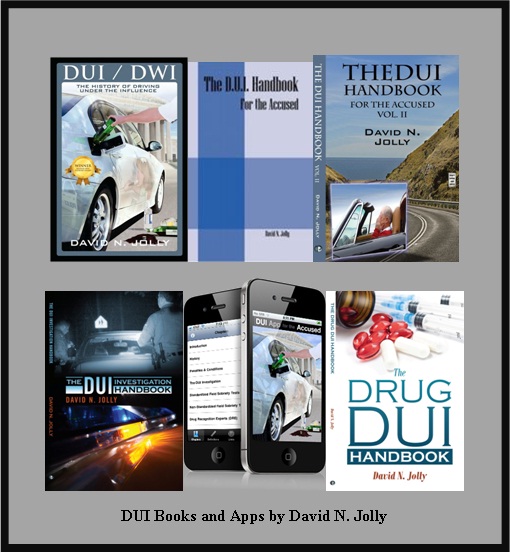Available for purschase at: http://www.amazon.com/DUI-DWI-History-Driving-Influence/dp/1432746227/ref=sr_1_3?ie=UTF8&s=books&qid=1258400052&sr=1-3
Ignition Interlock Device
The ignition interlock device (IID, or breath alcohol ignition interlock device (BIID)) is gaining popularity in governmental circles, court systems, and advocates against the crime of driving under the influence. The device is a breath test type apparatus that is connected to the vehicle’s dashboard, or more correctly to its ignition mechanism. The instrument requires the driver to provide a breath sample before allowing the vehicle to start. If the breath sample renders a clean result (i.e. a blood alcohol concentration reading below the permitted amount (usually, 0.00, 0.02, or 0.04 per cent)) the vehicle’s engine will start. Alternatively, if the driver provides a breath sample that is over the required amount then the vehicle will not turn over and the failed attempt will be reported to the governing agency.
While the vehicle is in motion (or the engine is turned on) the IID will randomly require the driver to provide another breath sample. The time between required breath samples is dependant on the calibration of the unit, however typically random breath samples are required every 10 to 20 minutes while the vehicle is in operation.
The purpose behind the random breath sample is to prevent a driver from having a “sober” friend blow into the device starting the vehicle. If the requested breath sample is not provided or exceeds the required limit, the device will record the incident, warn the driver and then start up an alarm (e.g., lights flashing, horn honking, etc.) until the ignition is turned off, or a clean breath sample has been provided.
A common, but inaccurate belief is that interlock devices will turn off the vehicle’s engine if alcohol is detected. Due to the fact that this would then create an unsafe or dangerous driving situation that would expose interlock manufacturers to substantial liability, a vehicle’s engine does not turn off if a breath sample detects too much alcohol on a driver’s breath. It is physically impossible for an interlock device to turn off a running vehicle.
Most of the ignition interlock devices in use today use an ethanol specific fuel cell for a sensor. This type of sensor is an electrochemical device where alcohol undergoes a chemical oxidation reaction on a catalytic electrode surface, typically made of platinum, to generate an electric current. This current is then measured and converted to an alcohol equivalent reading. Fuel cell technology is not nearly as accurate or reliable as the infrared spectroscopy technology used in evidentiary breathalyzers. However, IIDs are obviously substantially cheaper and smaller and therefore more practical for more widespread use.
The devices keep a running record of the activity on the unit and this record, or log, is printed out or downloaded each time the device’s sensors are calibrated, commonly at 30, 60, or 90 day intervals. In the DUI realm these records are provided to the courts for probation review and to the Department of Licensing in some instances. If the court still has jurisdiction and a violation is detected the court may require the driver to re-appear and possibly face addition sanctions.
To support the advocacy of the installation of IIDs there is research that suggests that drivers who have interlocks installed have lower recidivism rates while the device is in use, but that recidivism rates rise after interlock removal. Voas, R.B.; Marques, P.R.; Tippetts, A.S.; and Beirness, D.J. Alberta Interlock Program: The evaluation of a province-wide program on DUI recidivism. Addict 94(12):1849- 1859 (1999); Tashima, H.N., and Helander, C.J. 1999 Annual Report of the California DUI Management Information System. Sacramento, CA: California Department of Motor Vehicles Research and Development Section. (1999) Further, there are even a few studies that have reported that recidivism was significantly reduced both during interlock installation and after removal. Weinrath, M. Ignition interlock program for drunk drivers: A multivariate test. Crime Delinquency 43(1):42-59 (1997); Beck, K.H.; Rauch, W.J.; Baker, E.A.; and Williams, A.F. Effects of ignition interlock license restrictions on drivers with multiple alcohol offenses: A randomized trial in Maryland. Am J Public Health 89(11):1696-1700 (1999)
There have been concerns that the installation of IID is in fact, dangerous. One study observed that “the risk of a subsequent crash was higher for drivers installing an IID by 84 percent.” DeYoung, D.J., Tashima, H.N., and Masten, S.V. An Evaluation of the Effectiveness of Ignition Interlock in California. California Department of Motor Vehicles. Presentation at the 84th Annual Meeting of the Transportation Research Board. Washington, D.C. Page 10 (January 11, 2005) This finding is not surprising considering the device demands drivers provide breath samples periodically while driving.
Other concerns are that false positives can occur in an IID. In one study a man who was attempting dramatic weight loss and who was on a very low calorie diet had his IID fail to start. International Journal of Obesity. 31 559-561. (August 8, 2006) The IID company Smart Start states that the following items can cause their device to fail: spicy foods, certain mouthwashes, some chocolate mints, Altoids, Dentyne and other gums, cinnamon rolls and donuts (the sugar and active yeast can combine to create a low level alcohol fail) and smoke (if blown directly into the unit). www.smartstartinc.com The debate regarding their value and their need shall continue.
For information on your DUI, please contact our Snohomish County DUI attorneys, King County DUI attorneys, Island County DUI attorneys, or Skagit County DUI attorneys at 425-493-1115 or check out our website at http://www.washdui.com/


No comments:
Post a Comment